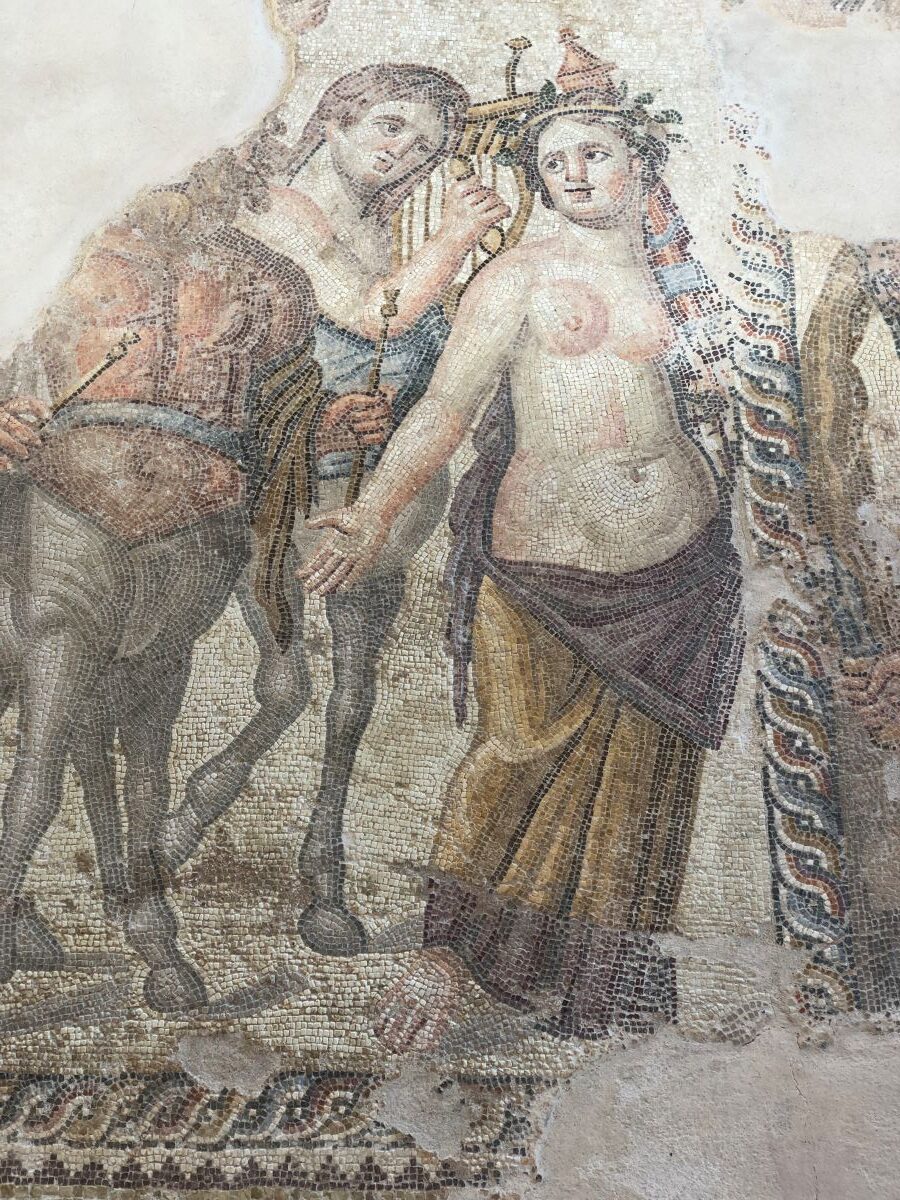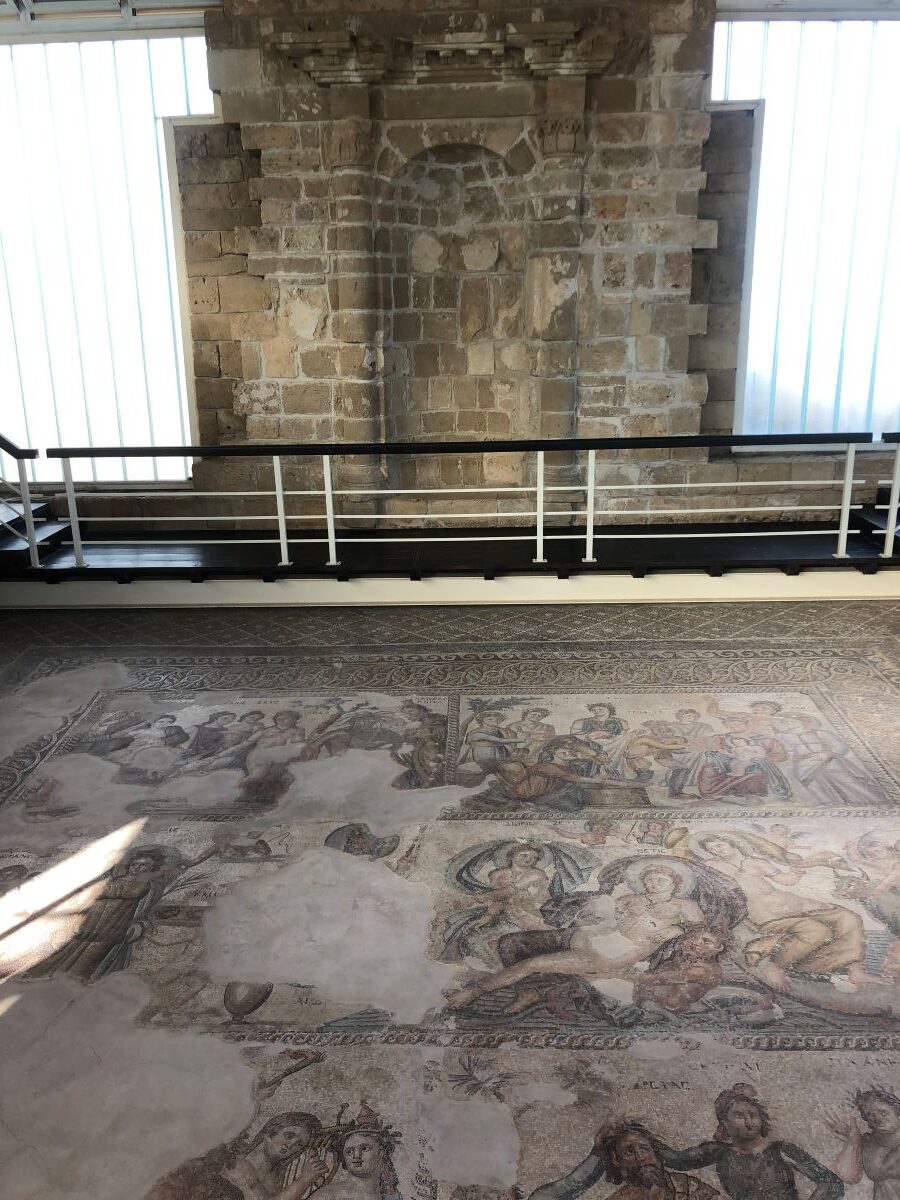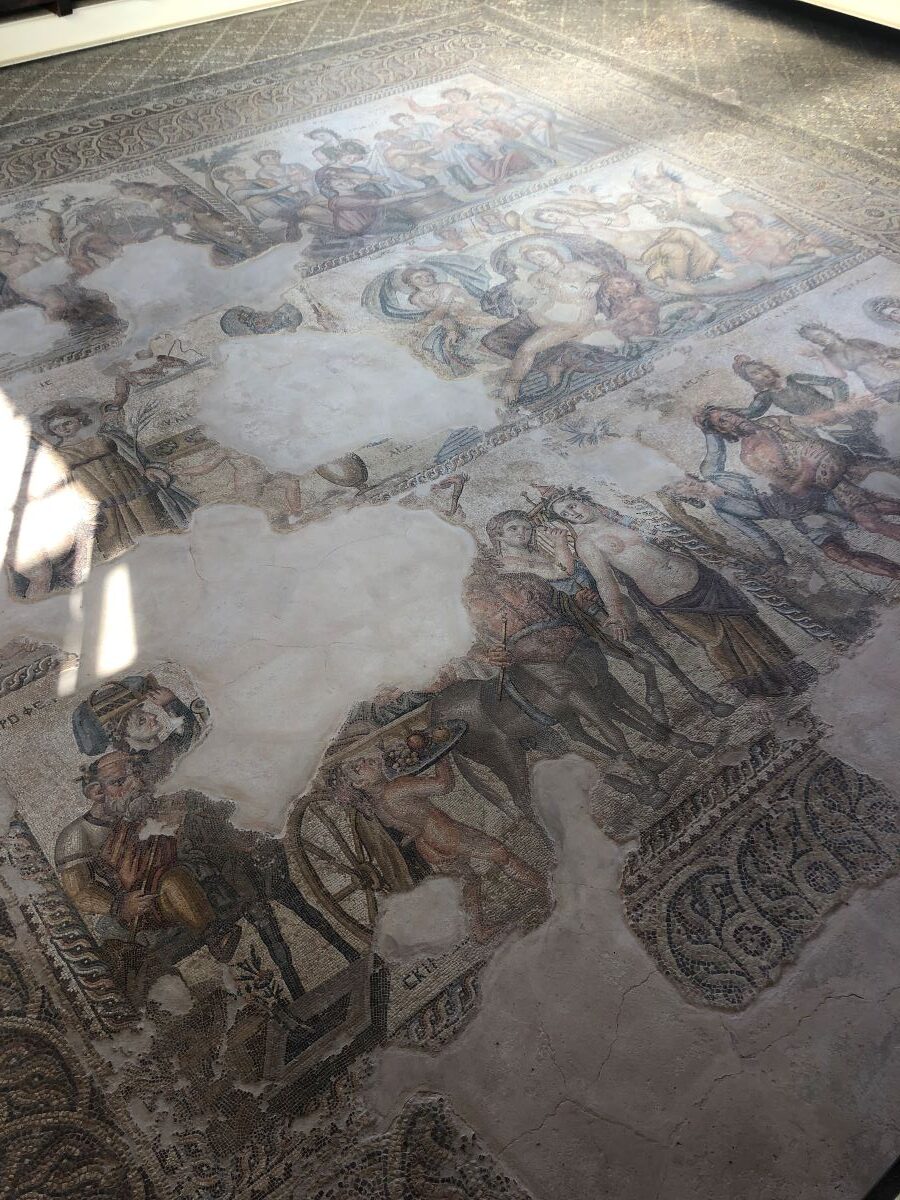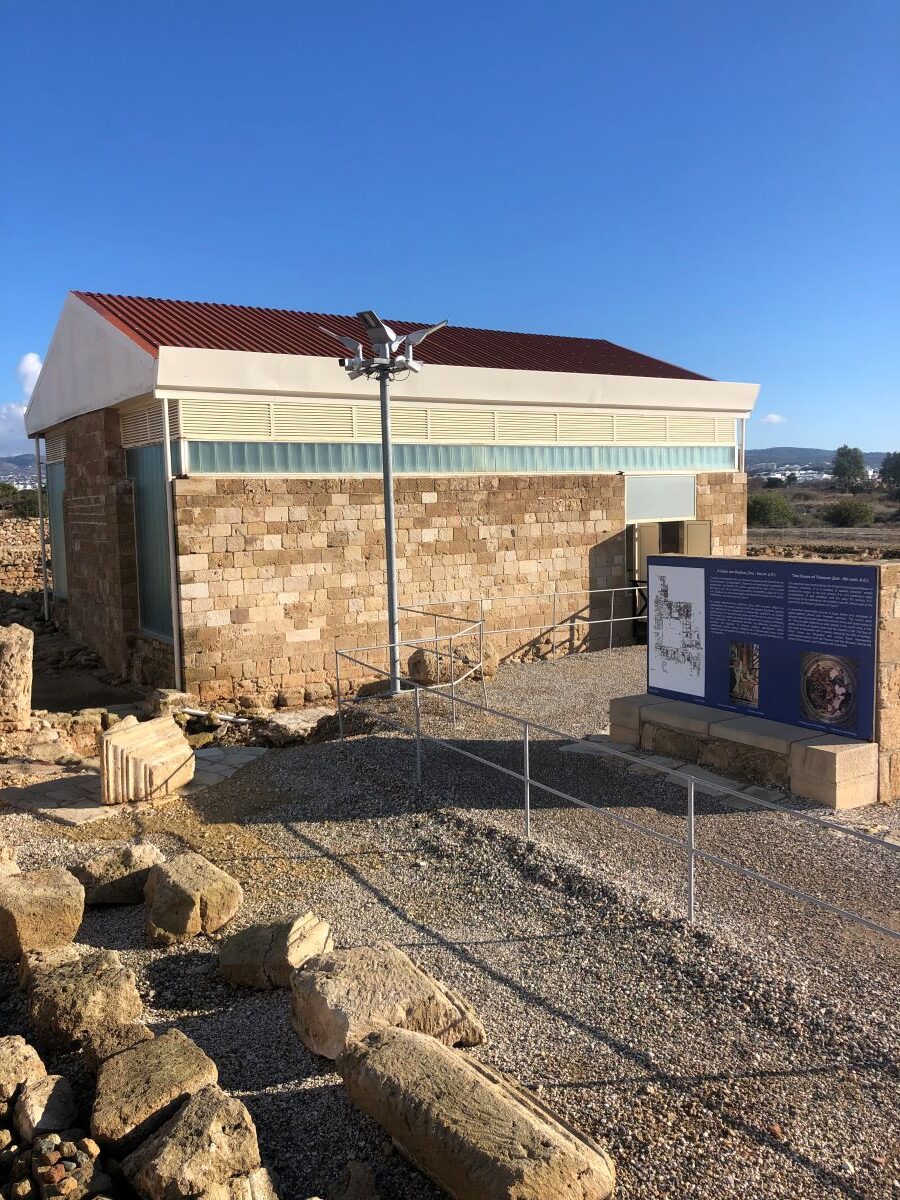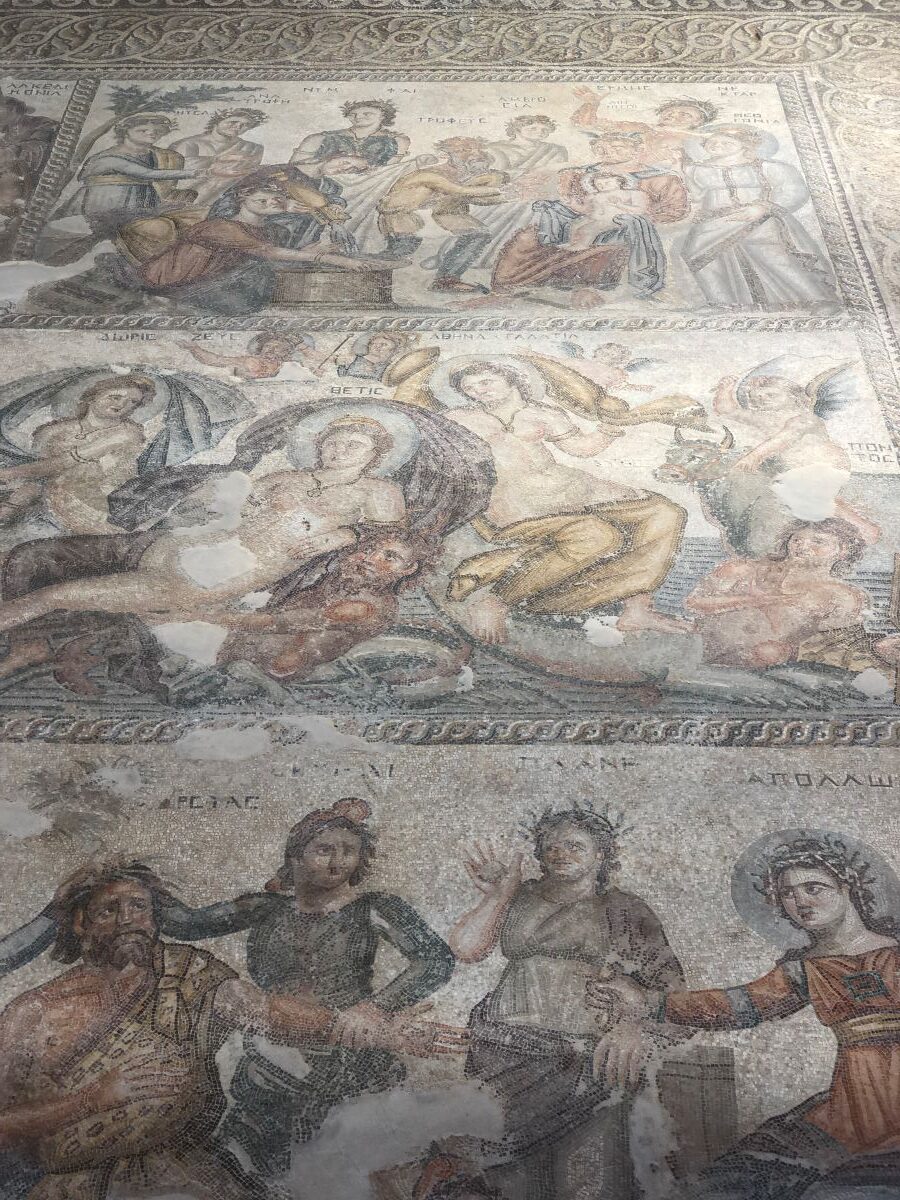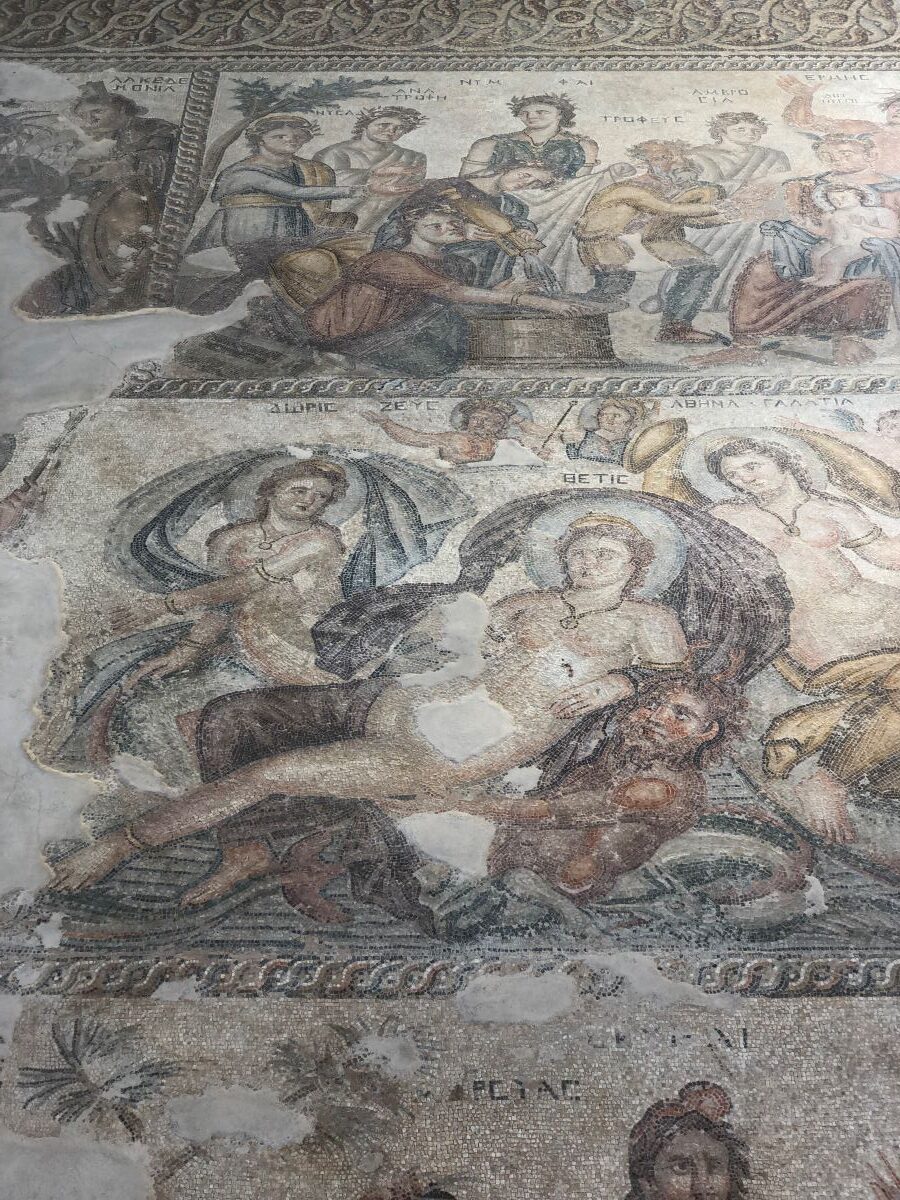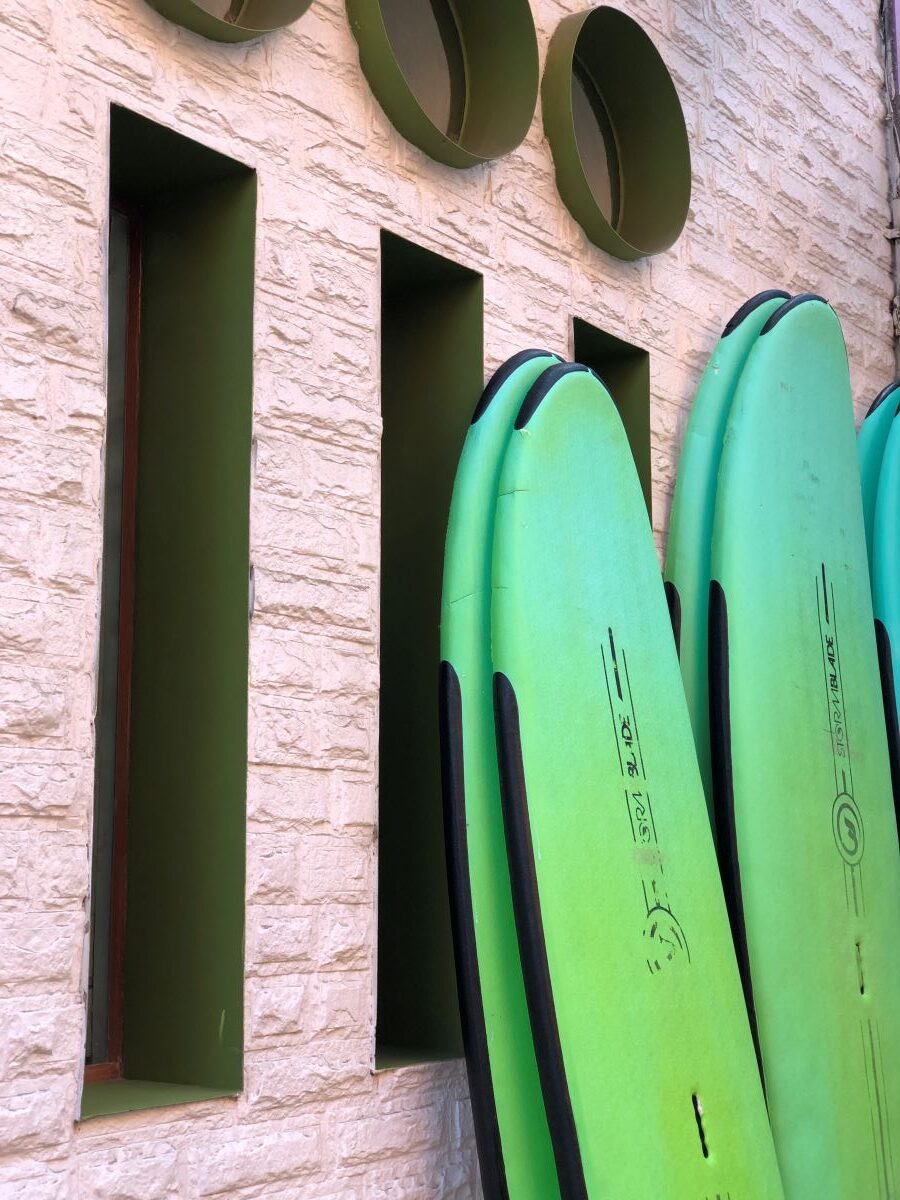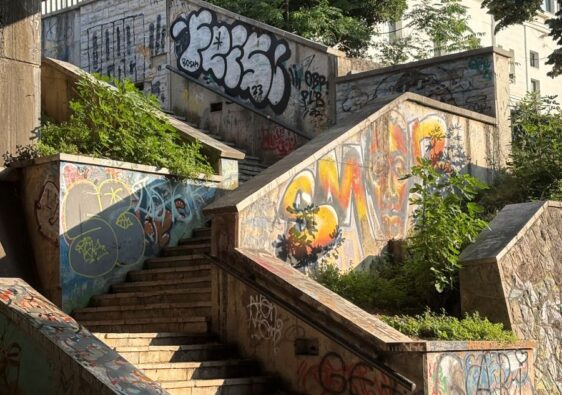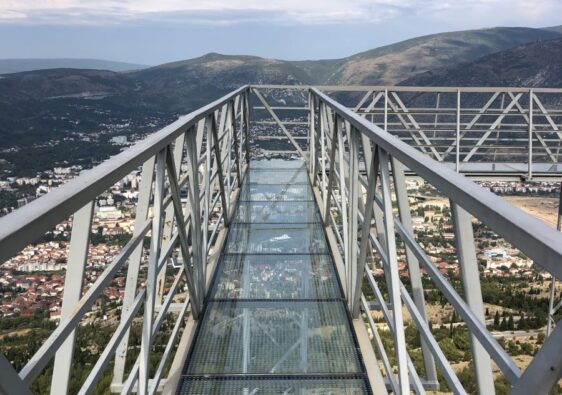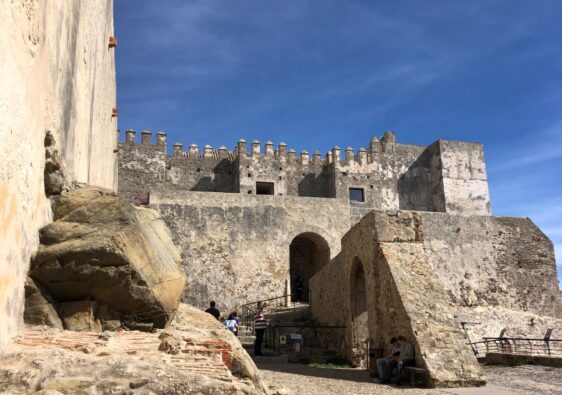My first post of the park covered the other incredible things I saw on my visit. This post will show the best mosaics at the Paphos Archaeological Park. I have to say, I adore ancient mosaics, and these ones are the most stunning I have ever seen in my life.
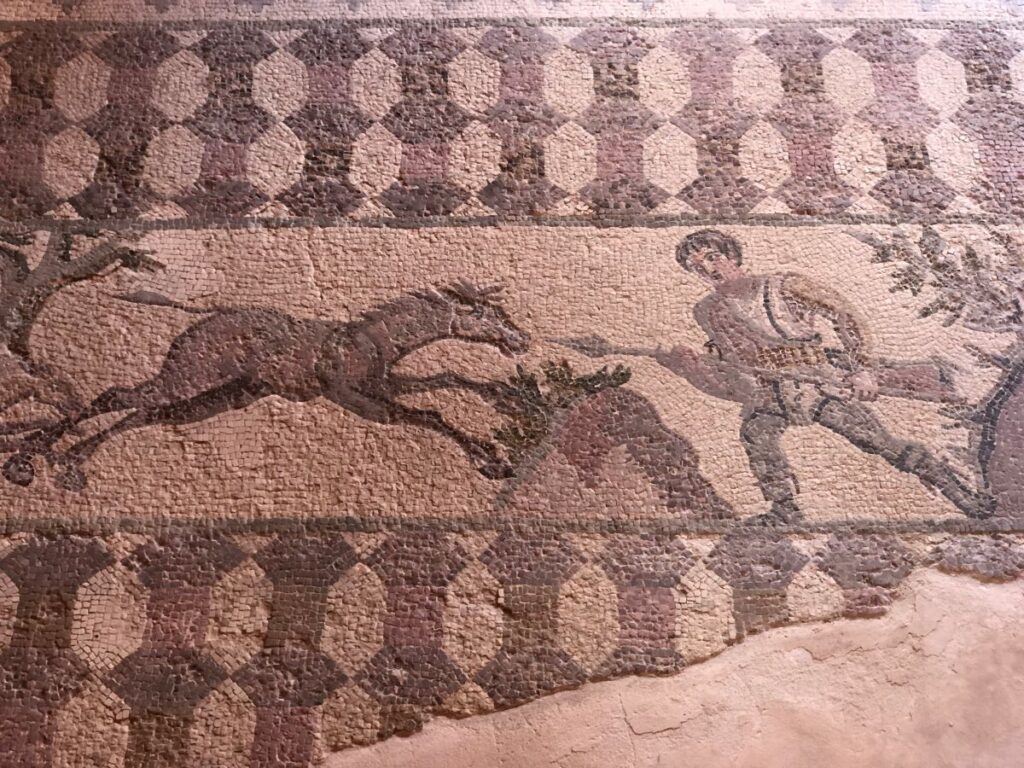
Outdoors
There are numerous mosaic floors that are open to the elements at this site. Nea Pafos was the capital of the Island at one time and this park is the remnants of that city. Many houses had mosaic flooring. While the houses are long gone, their foundations are still evident.
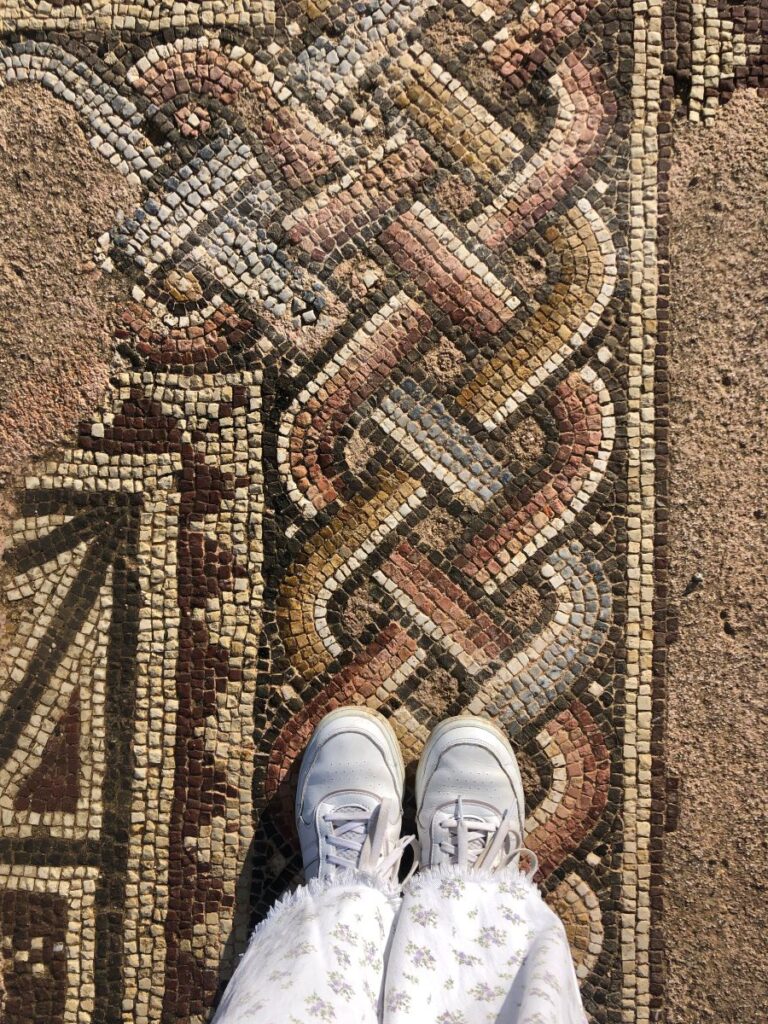
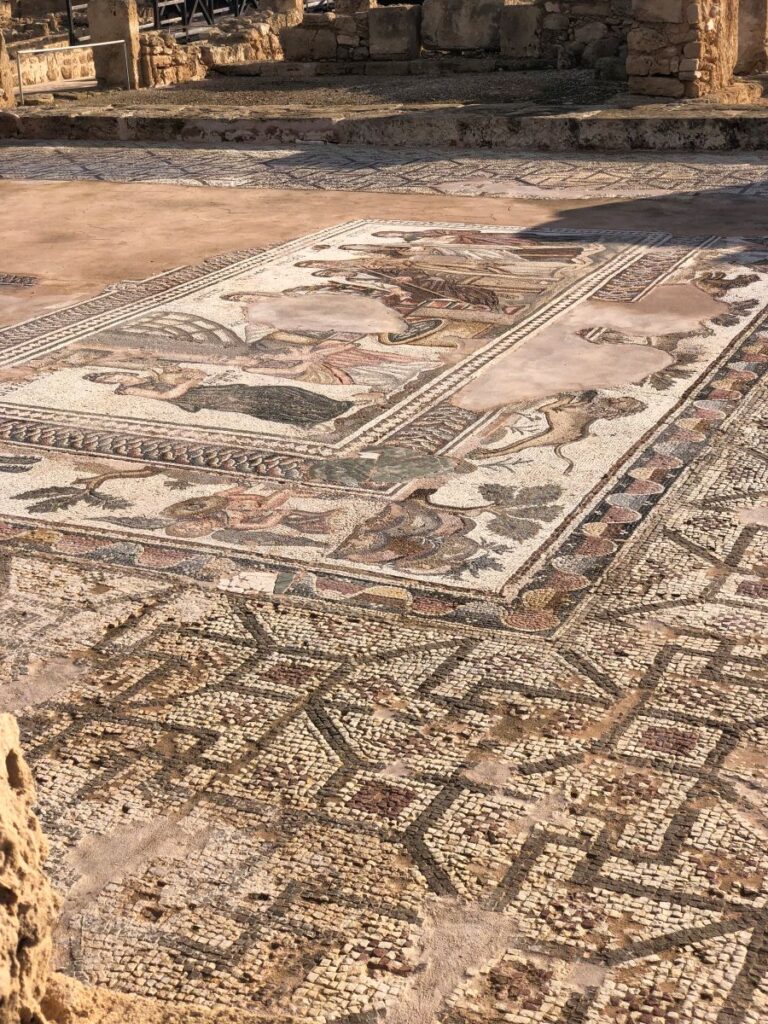
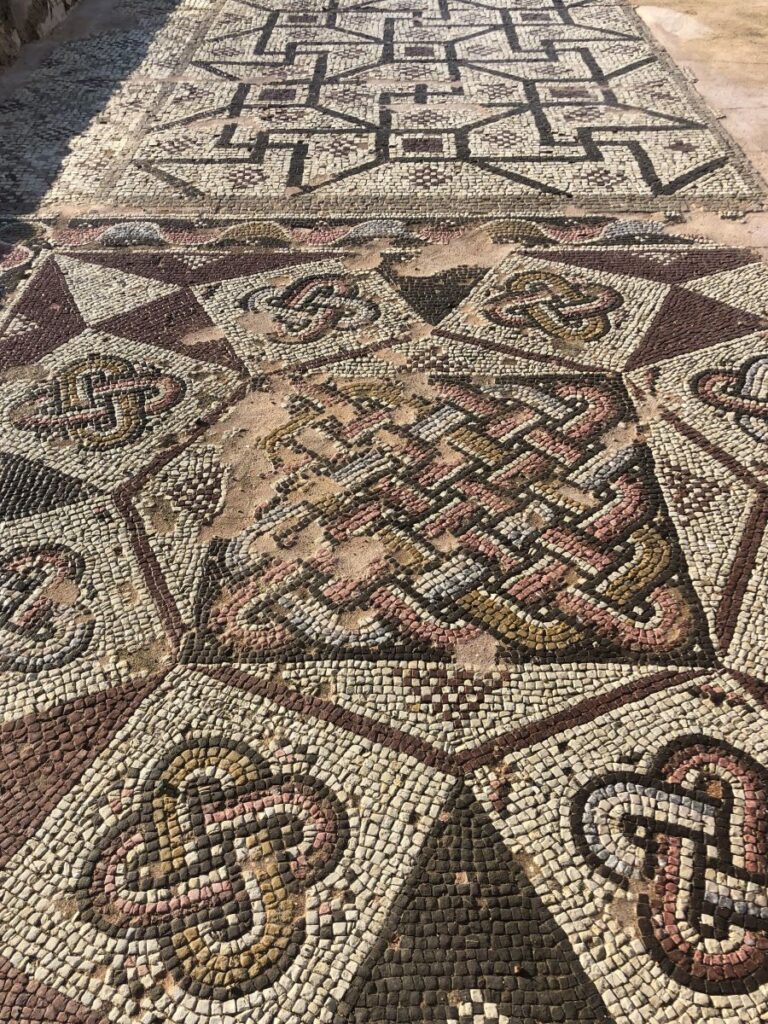
Sadly, being winter, many of the outdoor floors were covered with a layer of sand, which I believe is to protect them from the elements. There were remnants here and there of others left exposed, but the ones of significance have all been covered, except for one.
Mosaic with Theseus
They give you no warning! You are walking along, minding your own business, when out of the blue, bam! You are struck with the most incredible sight! This huge mosaic floor in all its glory is out in the open, uncovered and is exquisite.
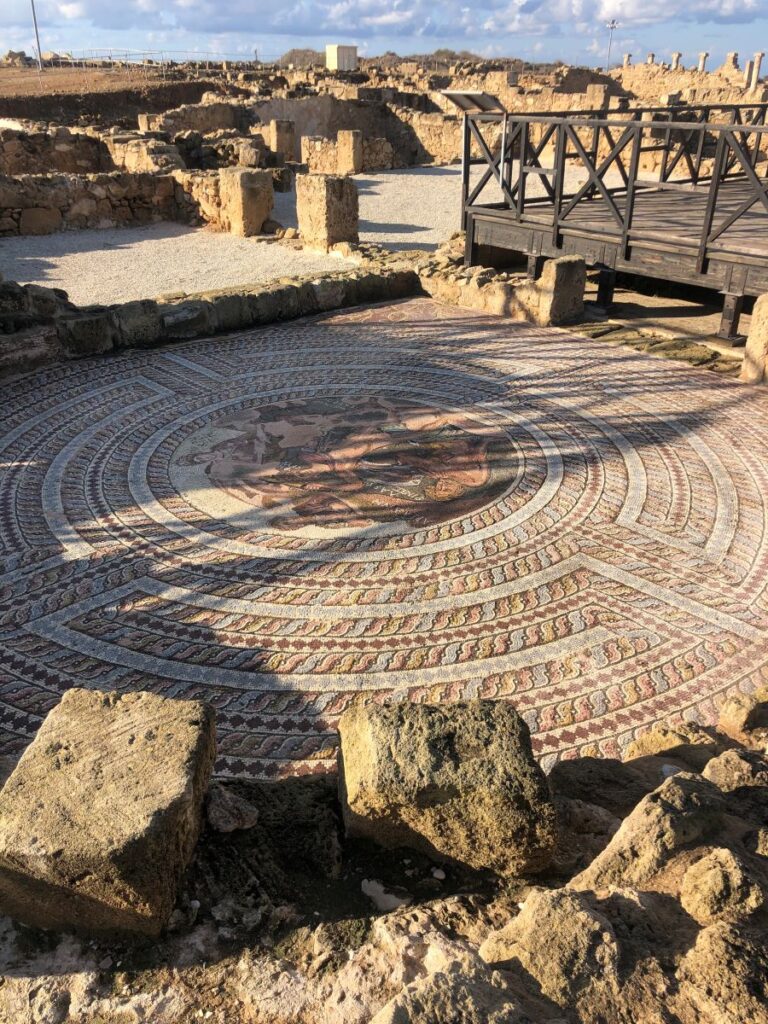
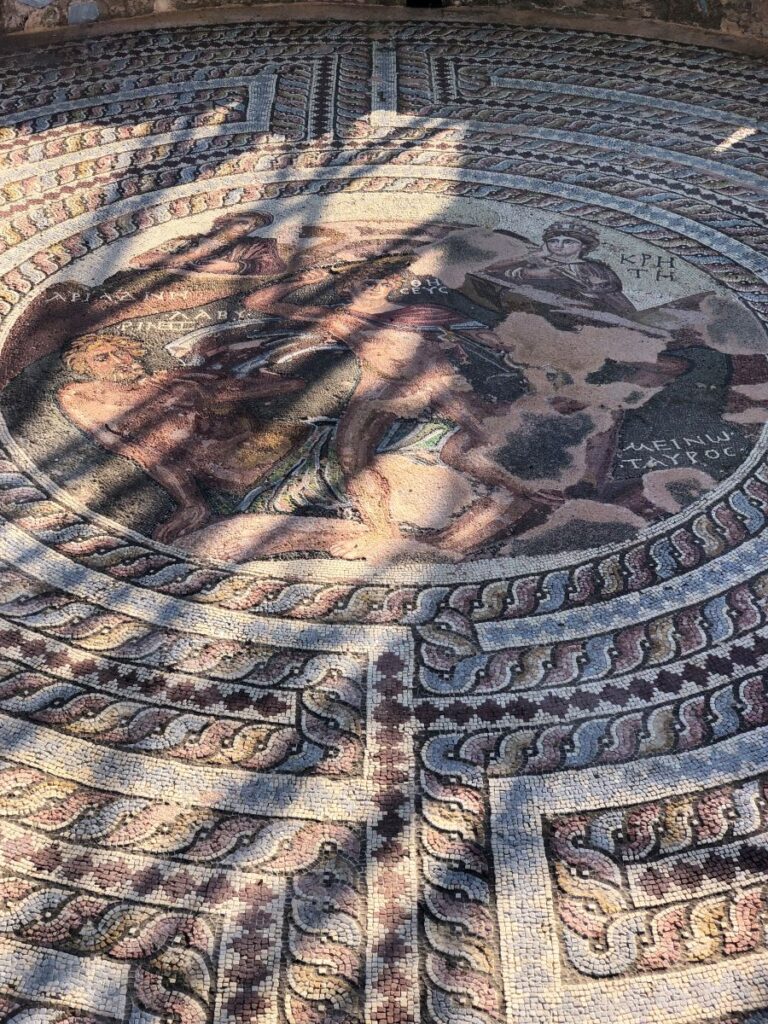
At the centre, the mosaic depicts the mythical duel between Theseus and the Minotaur. Theseus is depicted holding a club in one hand and with the other, the horn of the Minotaur.
The House of Aion
Perhaps the first set of mosaics you may encounter after leaving the entrance are inside the House of Aion. These houses were palatial, as is evident by the size of the rooms and the quality of the mosaics. There were not regular everyday Joe houses.
Most of this house still remains unexcavated, the reception hall however is exposed and is what we see today. Covered for protection, the mosaics include five smaller panels each depicting a different mythological scene. At the centre of the depiction is the god Aion which the house has been named after.
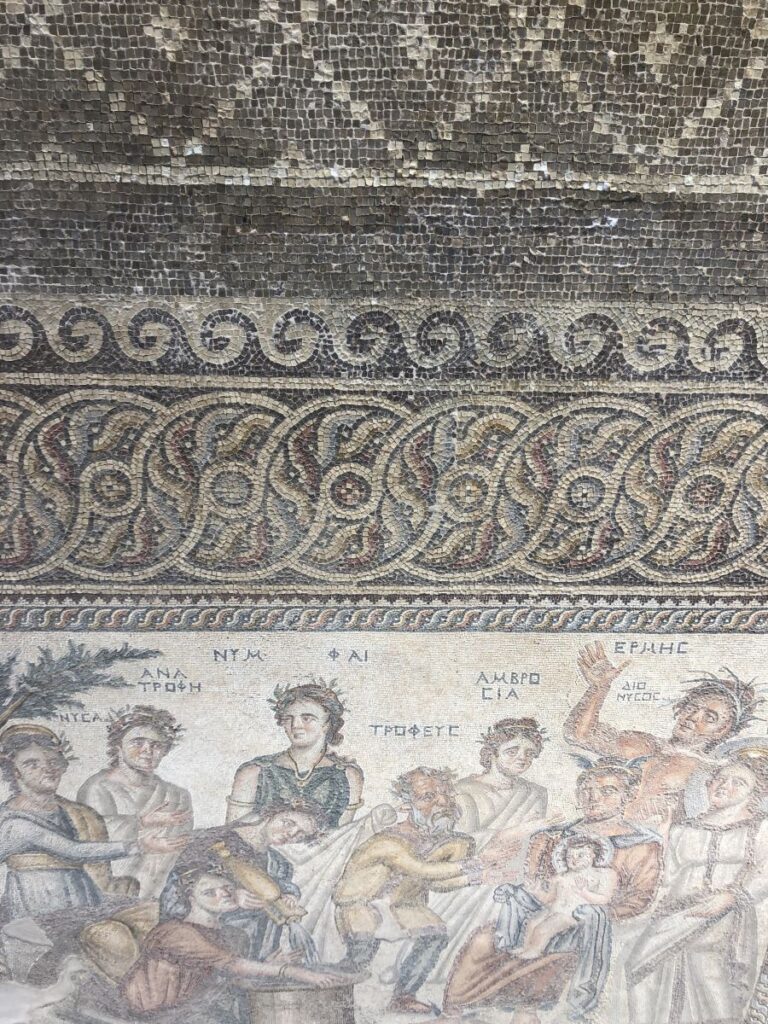
House of Dionysus
This is an enormous house which has been covered to protect all that it contains. Visitors walk atop a wooden walkway that provides a bird’s eye view of the glorious images below.
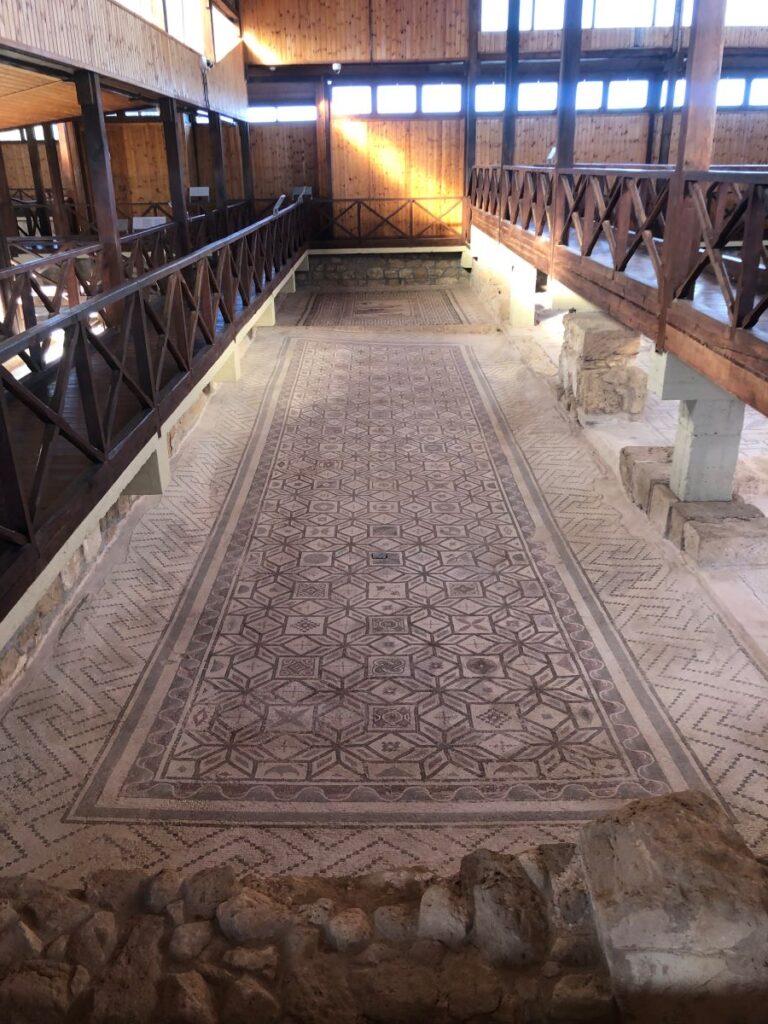
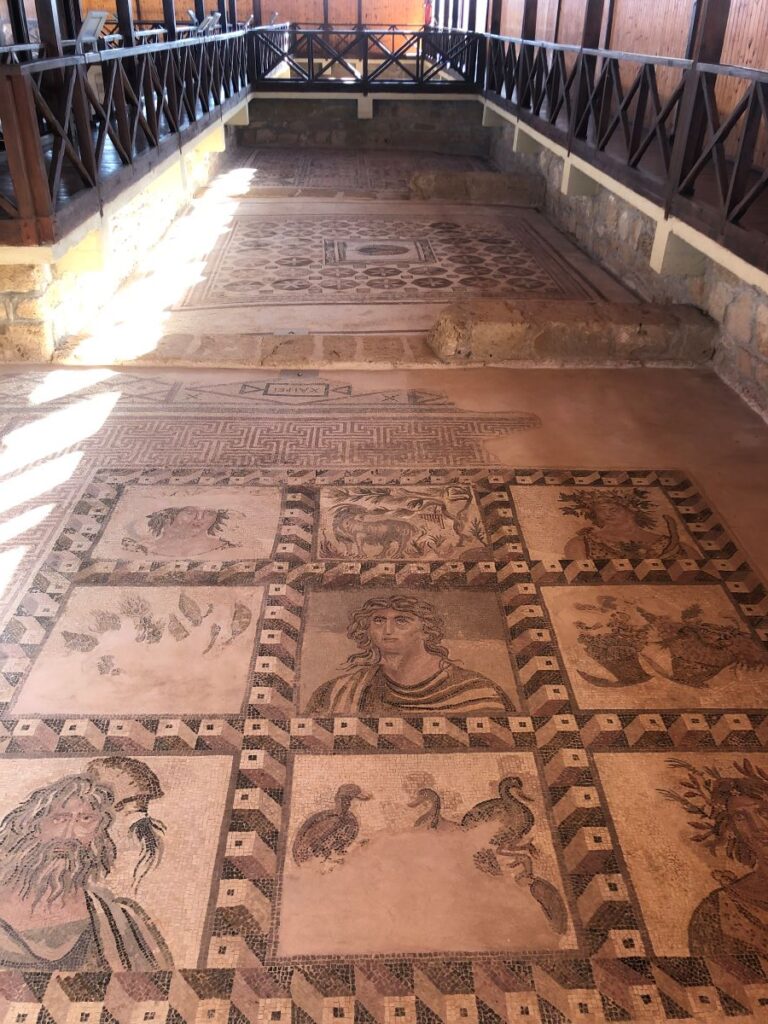
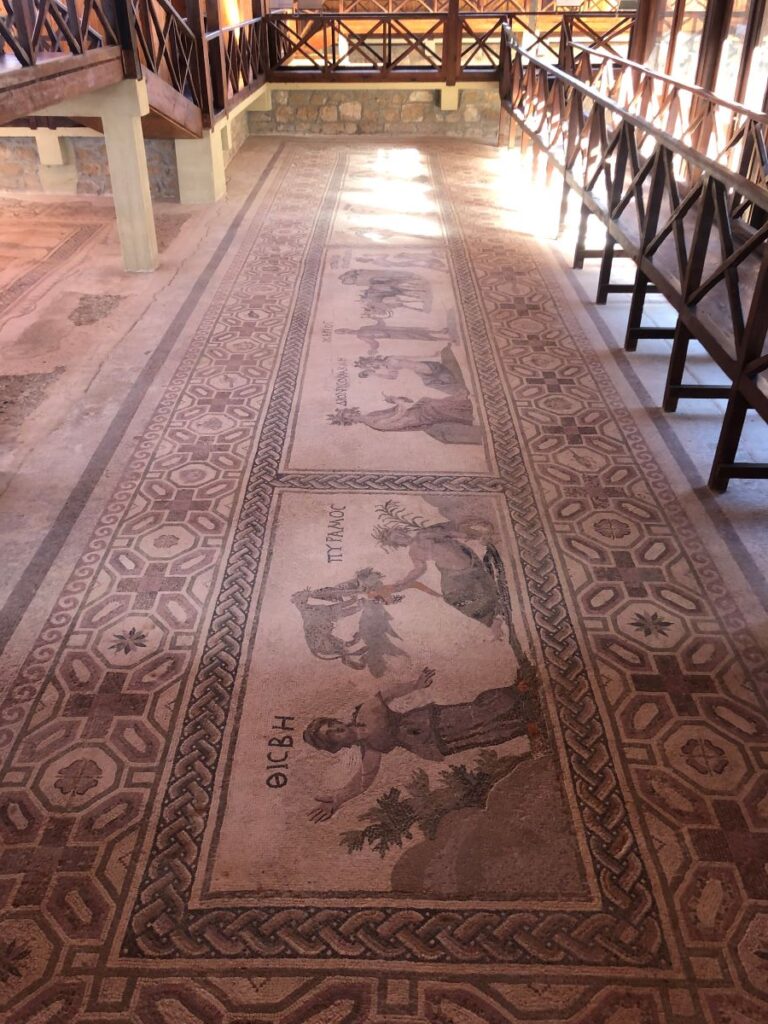
Built on an early sanctuary carved into the bedrock, the House of Dionysus was constructed in the 2nd century AD by the Romans. It was later destroyed in the 4th century, probably from an earthquake.
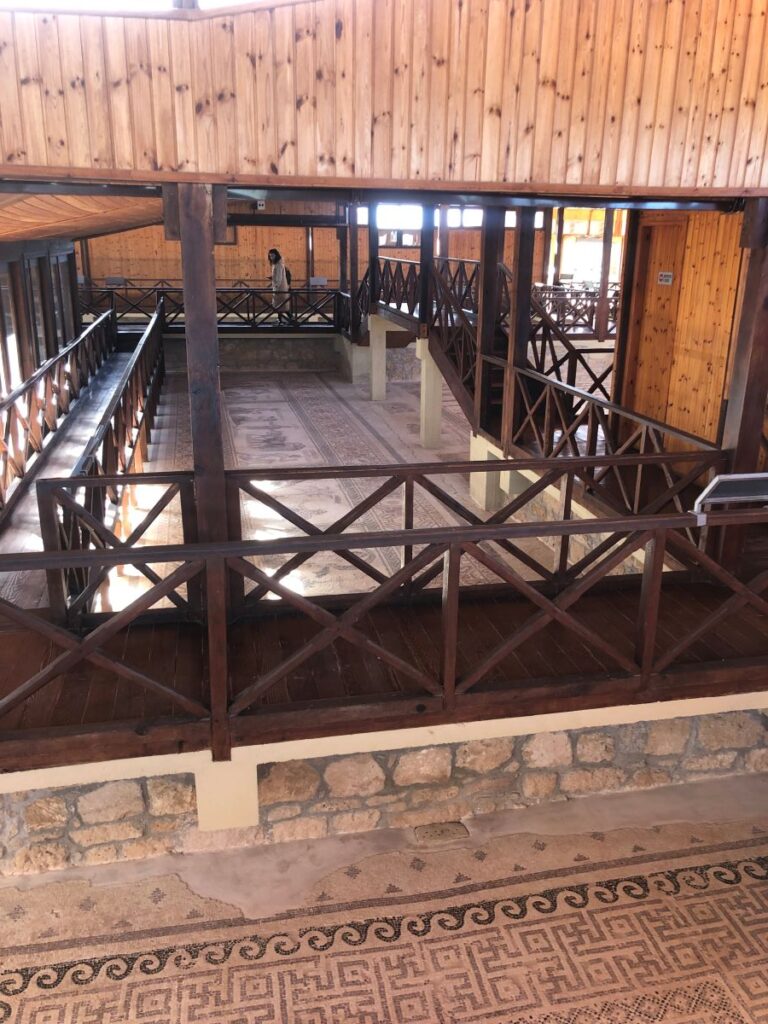
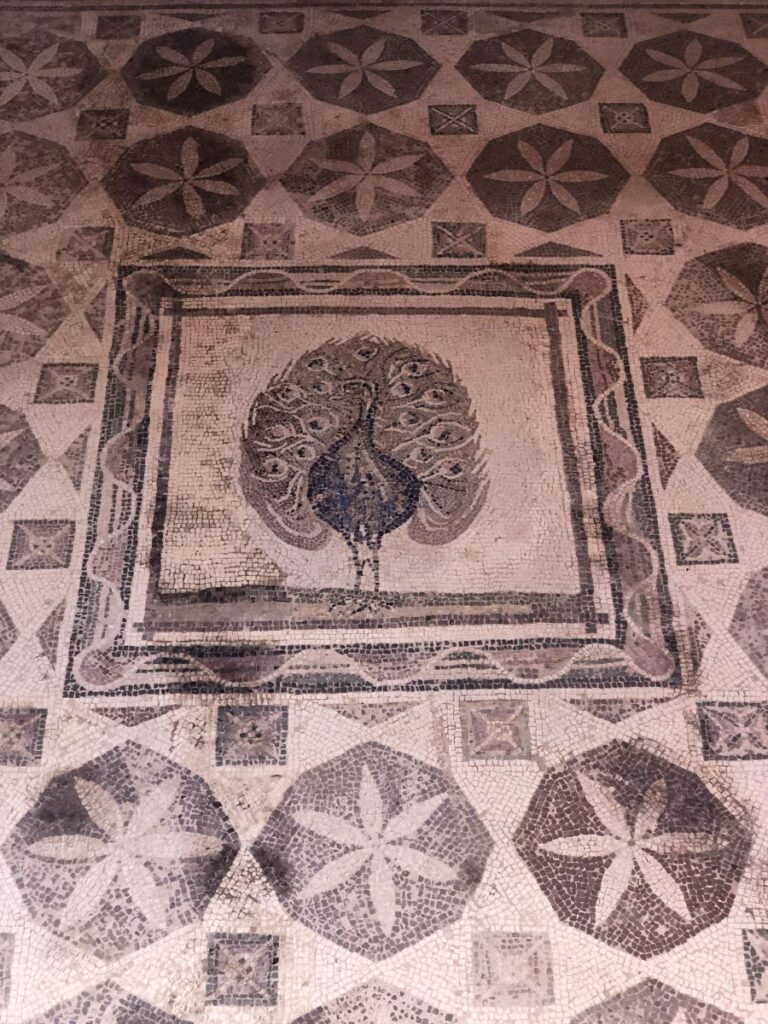
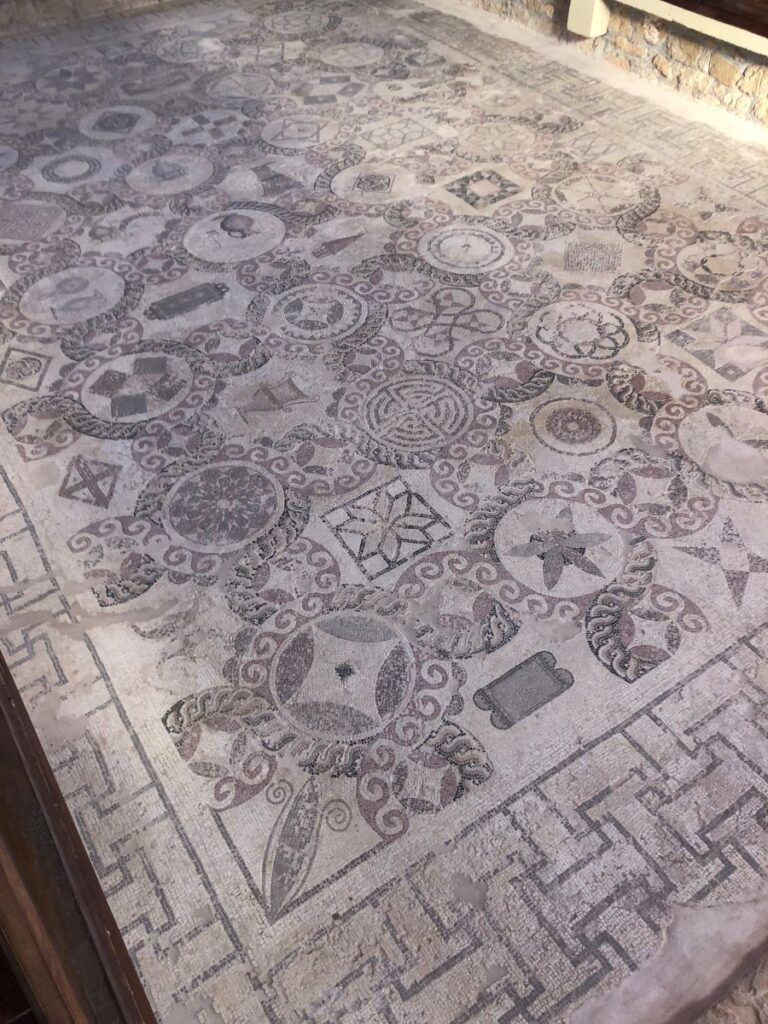
Most of the scenes contain images of Dionysus, thus the name for this incredible house. This luxurious Roman residence contains an atrium, an impluvium, and a central open courtyard surrounded by a portico, all of which are lavishly decorated with mosaics.

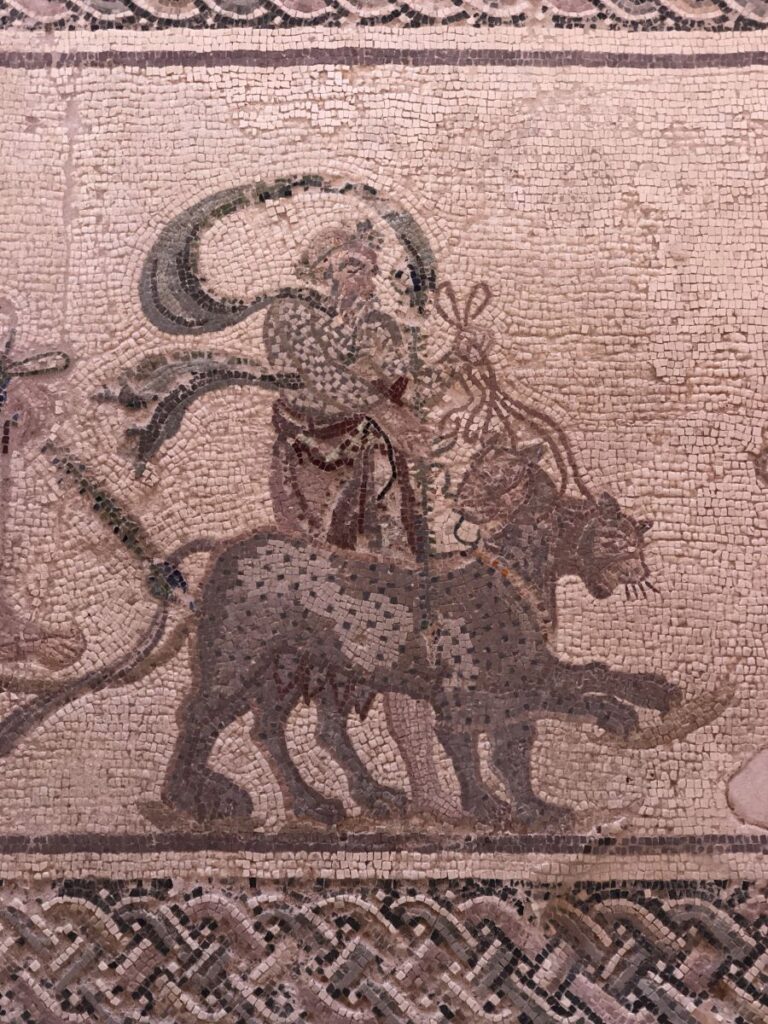
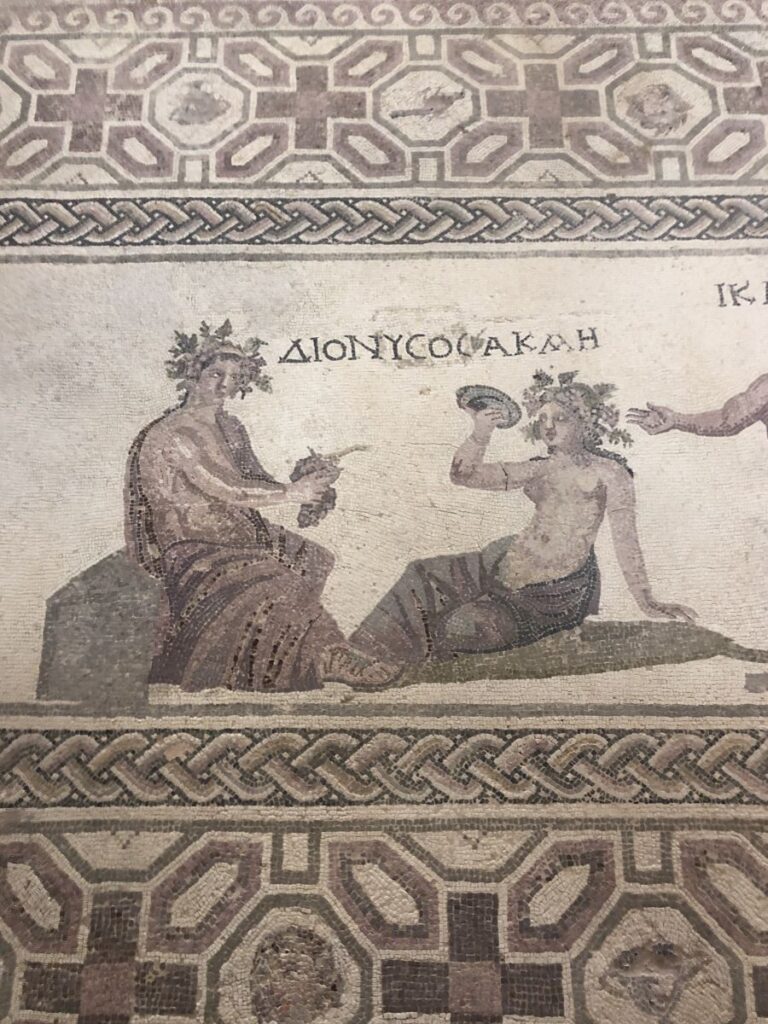
I was fascinated with the animals so have a collection of photographs of mammals that I could find in the portico.

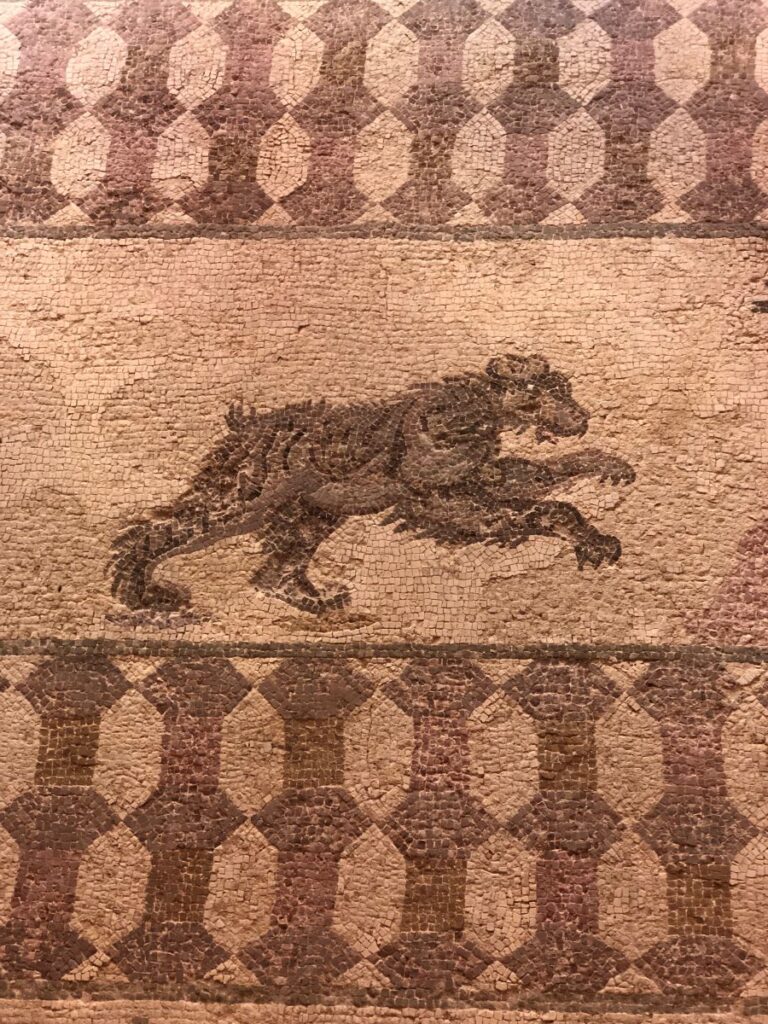
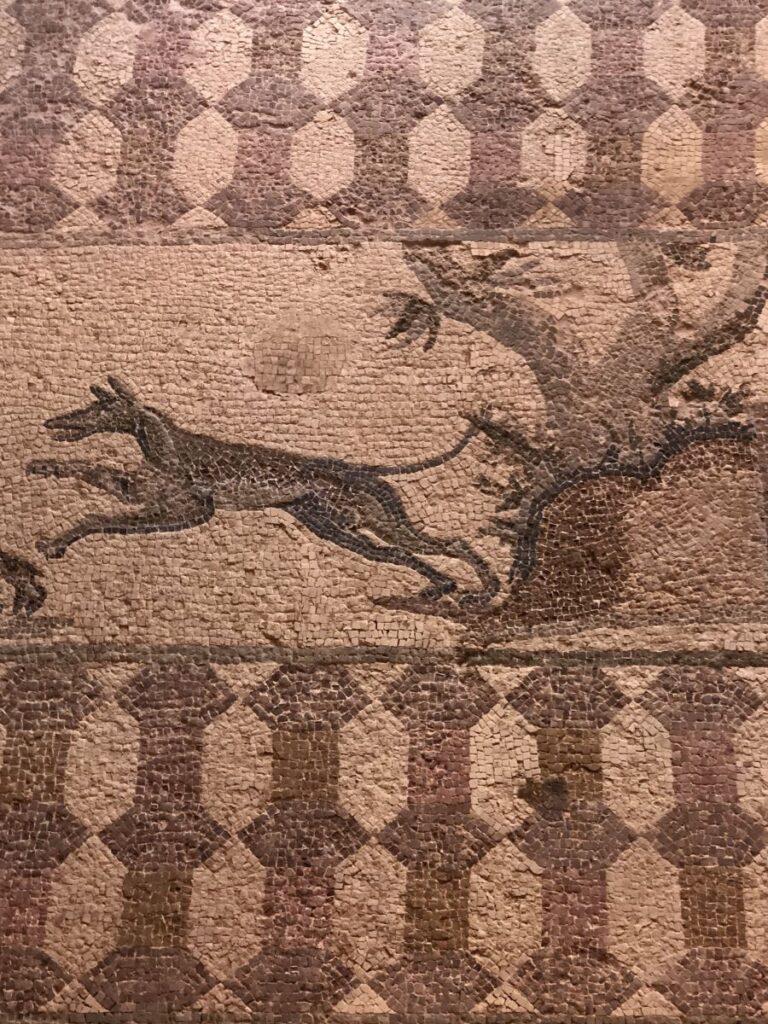
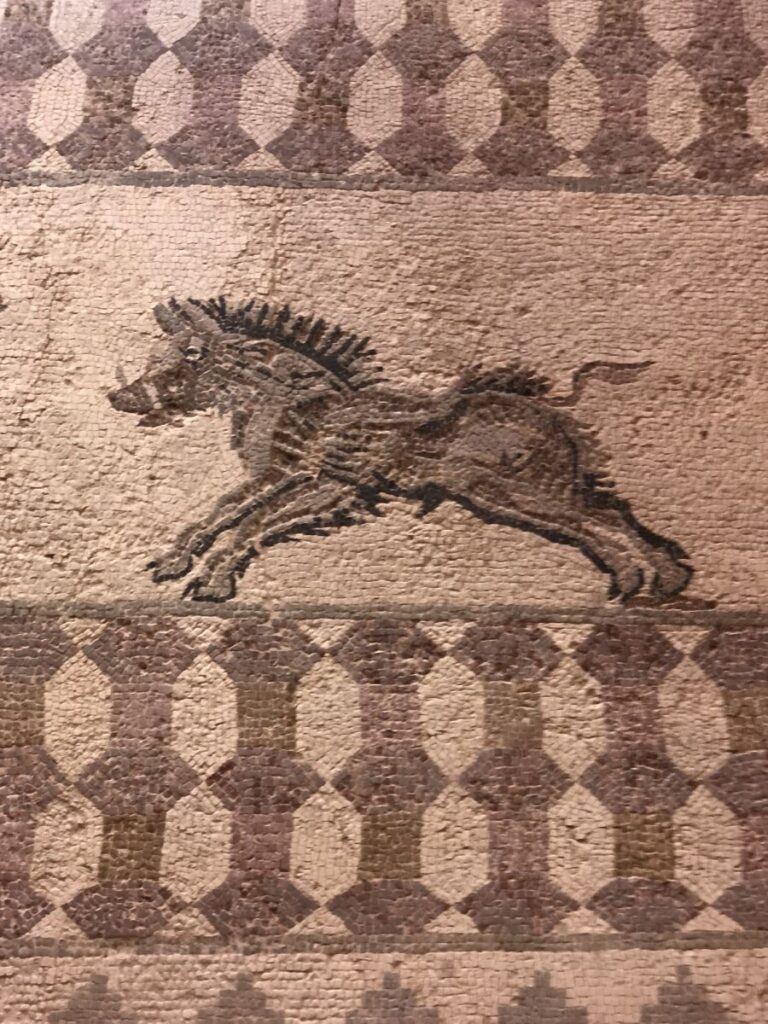
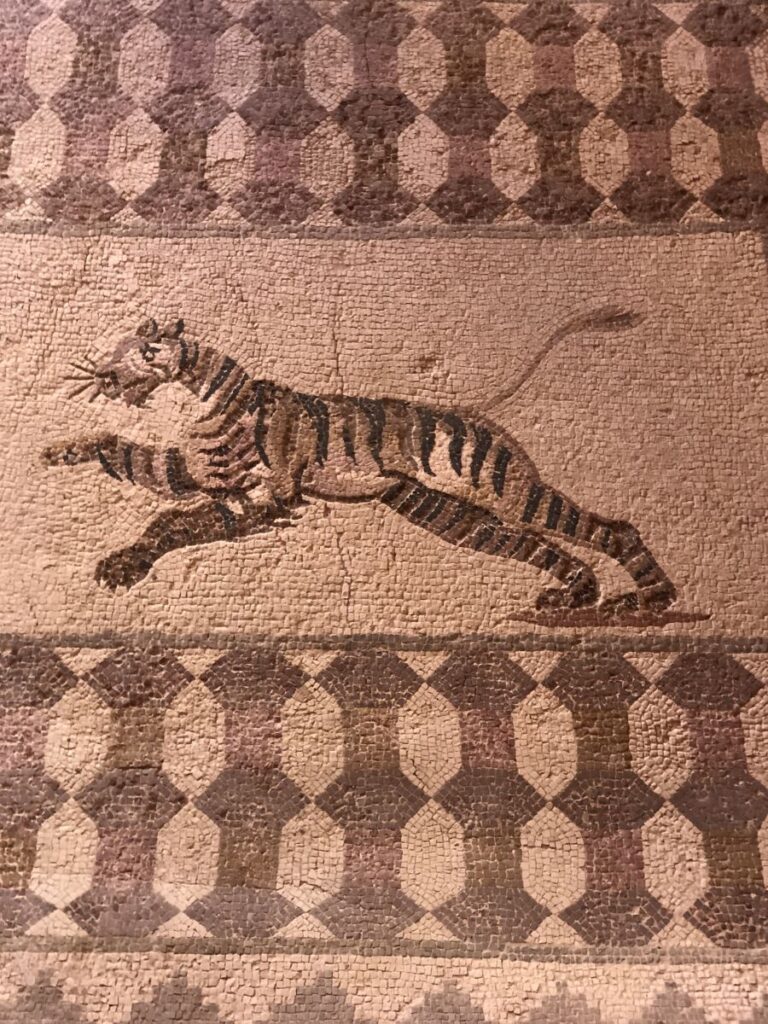
When I left this house, I was without word. To see this stunning ancient art form in all of its glory is not something I can easily express. The shades of colour, the ability to create dimension, the emotion that is evoked from pieces of stone is bewildering. I hope you experience this one day for yourself. It is surely something I will never forget.
